Angliss Hospital expansion
The Victorian Government is investing $112 million to expand the Angliss Hospital in Upper Ferntree Gully.
A new multi-storey building will deliver a new inpatient unit, four operating theatres, a new central sterile supply department, and spaces for outpatient services.
The expansion will transform services at the hospital, ensuring the Knox and Yarra Ranges communities can access world-class healthcare facilities close to home.
Construction of the new multi-storey building is underway.
The expansion is expected to be complete in 2026.
New Footscray Hospital Project Newsletter #3 | April 2022
Up, up and away
Construction of the new hospital is rising above the site hoarding. Let’s look at what’s been happening over these past few months:
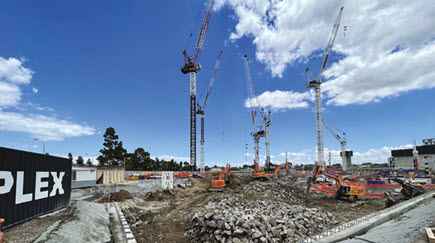
There has been 330,000 cubic metres of rock and dirt excavated from the site.
Bulk earthworks and excavation is expected to be complete by the end of April - a significant milestone for the project.
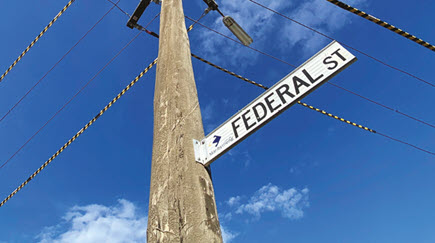
To upgrade the surrounding facilities of the new hospital, works are being carried out by a number of authorities and contractors on Federal Street.
These include NBN, replacement of power poles, and sewer entry works.
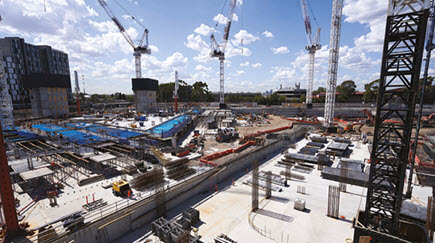
The main hospital tower containing the Inpatient Unit (IPU) is emerging from the ground and will soon be visible from the street.
At 12 stories tall, this is the largest building at the new hospital and will also be the entrance to the emergency department.
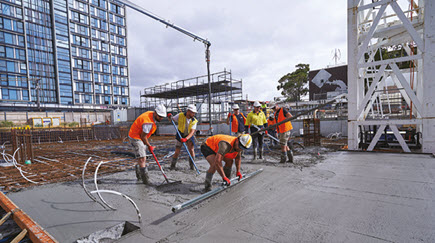
The first suspended slab pour took place in February, using around 150 cubic metres of concrete.
The slab will connect the future Victoria University building and the hospital’s community precinct, located on the corner of Ballarat Road and Tiernan Street.
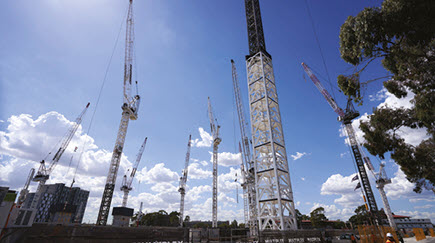
The tenth and final crane has been installed on the site.
Five of the 10 cranes will be used to construct the main hospital tower.
Health Minister visits the site
Victorian Minister for Health Martin Foley and Member for Footscray Katie Hall recently visited the site to view construction progress.
Opening in 2025, and operated by Western Health, the new hospital will feature more than 500 beds, enabling care for an additional 15,000 patients and for an additional 20,000 people to be seen by the emergency department each year.

(Pictured left to right) Member for Footscray Katie Hall, Minister for Health Martin Foley, Western Health CEO Russell Harrison, Plenary Health Chair Kelvyn Lavelle, and Victorian Health Building Authority Executive Director Stephen King.
Mary Borg, Patient Services Assistant (PSA), Footscray Hospital
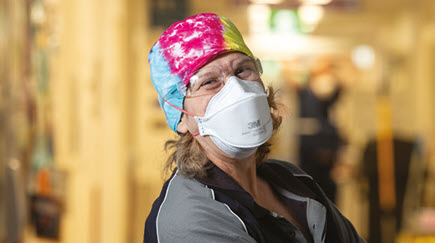
Caring for others has been a key feature of Mary Borg’s life, but it wasn’t until she accepted a Patient Services Assistant (PSA) traineeship at Footscray Hospital in 2014 that she found her calling.
‘A friend of mine was a PSA at another hospital and he told me I’d love this job,’ says Mary.
Eight years later, Mary is “part of the furniture” in Ward 1 West.
While a large amount of her work time is spent cleaning, assisting nurses and performing errands such as blood and sample runs, it’s the patient contact that gives her the most job satisfaction.
‘I try to mix with the patients because I can see a lot of them are lonely, I have a joke with them and try to make them relax,’ she says.
‘We’re an orthopaedics ward and some patients come in overnight and others can be here for months.
‘A chat can mean a lot to someone who is lonely, so that’s what I try to do. I like to cheer them up a bit, so they feel they are not so alone.’
Frank Prestinenzi, Facilities Manager, Footscray Hospital
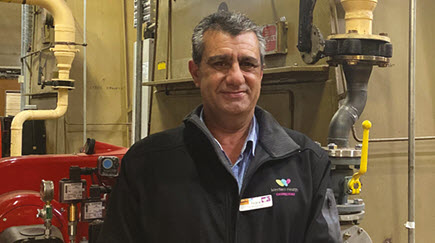
As someone who once shovelled coal into the boilers to heat Footscray Hospital, Frank Prestinenzi appreciates the technology that will feature in the new Footscray Hospital.
But he knows there will be some mixed feelings when the move to the new facility takes place in 2025.
‘When the day comes, I reckon there will be a tear in my eye,’ he says.
In the early 1980s at just 17, Frank began his apprenticeship as a mechanical fitter at Footscray Hospital.
Today, Frank and his team maintain the same boilers that he worked on as an apprentice four decades ago.
‘A lot of the equipment is old, but with regular maintenance, it’s not an issue.’ he says.
Frank says he is very proud of his team, which includes several trades that work across the hospital.
‘We are not frontline workers but if we weren’t here, this place wouldn’t run.’
Meet Elise Weavers, Project Coordinator, Multiplex
In recognition of International Women’s Day (IWD) in March, we took the opportunity to reflect on the unique contribution women make to the construction industry by putting the spotlight on the women working on the new hospital site. We spoke to Elise about her career and advice to other women considering roles in construction.
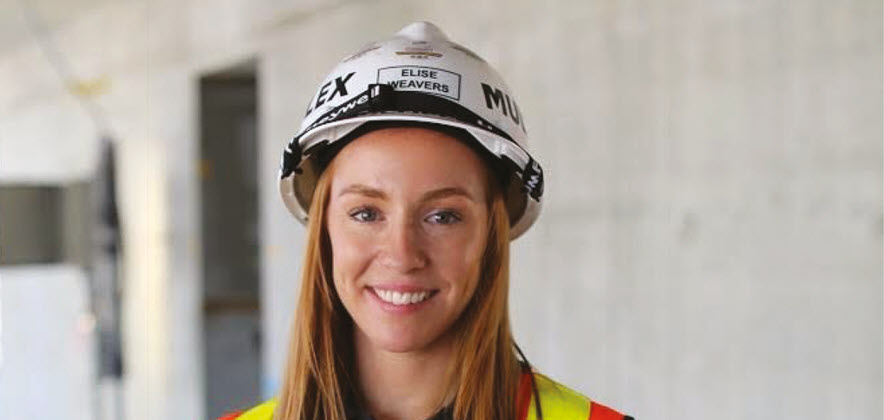
What is your role on the project?
‘My role is to help coordinate the design process for the prototype rooms being built for the new hospital. This will include finalising the design, tendering for subcontracting trades, supervising construction, and the review/approvals process with Western Health and other project partners.’
What are the prototypes?
‘The prototypes are a built replicas of hospital rooms to assess how the different spaces function, look and feel. There will be 15 rooms in total, including an operating theatre and intensive care unit bay. The prototypes will be in place for three years and are being built in a warehouse in Sunshine.’
How did you start working in construction?
‘I studied architecture and after working as an architect for a year, I realised that I wanted to be out on site more, so I went back to uni and completed my Masters in Construction Management. It was there that we had a guest lecturer from Multiplex and that’s how I found out about their grad program.
‘After working on a couple of key Multiplex projects for the last four years, I was excited to then take on a role on the New Footscray Hospital Project.’
What do you think is the best thing about working in the construction industry?
‘I like the variety of work each day. Although my current role is focused on the design phase, I’ll then get the opportunity to move into construction and supervision. I enjoy that my role evolves with the project.’
Is there a specific project milestone that you’re looking forward to?
‘Yes, it will be a big milestone to get the prototypes approved and signed off. It will be satisfying to see all our hard work pay off and see the rooms come to life.’
How important are these prototypes in the design of the hospital?
‘They are important for the whole project because it sets the standard for all the hospital rooms on site, the construction details, and finishes. It’s a dry run that helps us get the design and construction right.’
What is your advice for other women starting out in the industry?
‘When I started out, I felt nervous as a young woman in a mostly male environment, and I felt that the women I worked with were all so experienced and knowledgeable, which was intimidating at first.
‘My advice is to try and overcome any trepidation, ask lots of questions and don’t hold back, because as soon as I did, I realised that people in this industry are genuinely willing to help and teach you and that’s when you learn the most.’
Hospital room mock-ups important part of the design process
More than 100 Western Health clinicians have been given the opportunity to provide their input into the ongoing design process for the clinical rooms in the new Footscray Hospital.
Ten clinical room mock-ups were built at the end of last year, allowing clinicians to assess the spaces, including placement of equipment.
The rooms included an inpatient bedroom and ensuite, mental health inpatient bedroom and ensuite, intensive care bay, anesthetic induction room, theatre, hand wash bay, and emergency department bays (acute and recovery).
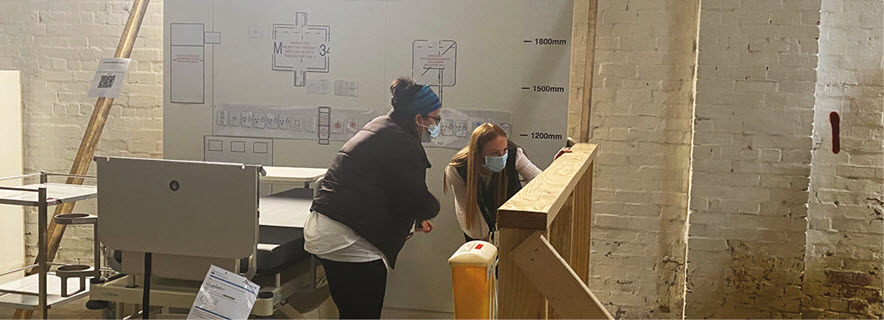
The process generated more than 600 pieces of feedback which is informing the next step in the design process, including development of the prototype rooms, which will be built in nearby warehouses later this year.
The visits were conducted under a strict COVID-safe plan and staff were also able to view 3D renders of the rooms and provide their feedback online.
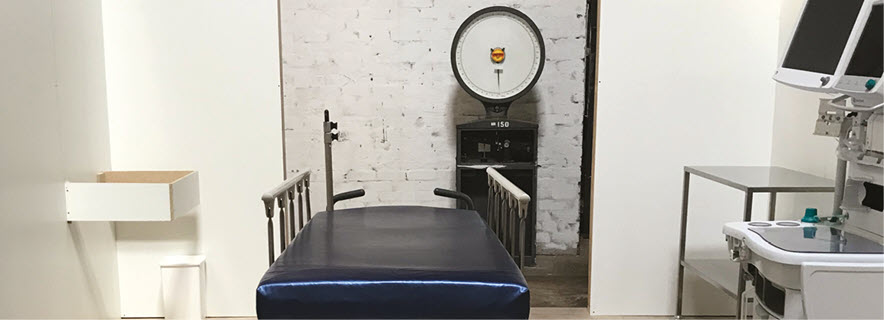
See how the hospital is taking shape in the virtual engagement room
The award-winning new Footscray Hospital virtual engagement room closed on 31 May 2022. The accessible version of the virtual engagement room continues to be available on our website.
The new hospital is taking shape and you can visit the room to check out construction progress onsite and see what’s coming up in our ‘meet the builder’ area.
You can also discover lots of information about the design and construction of the $1.5 billion new hospital, with the opportunity to take a 3D tour of the site, learn about how the community has shaped the design of the hospital and access fun kids’ activities in the community corner.
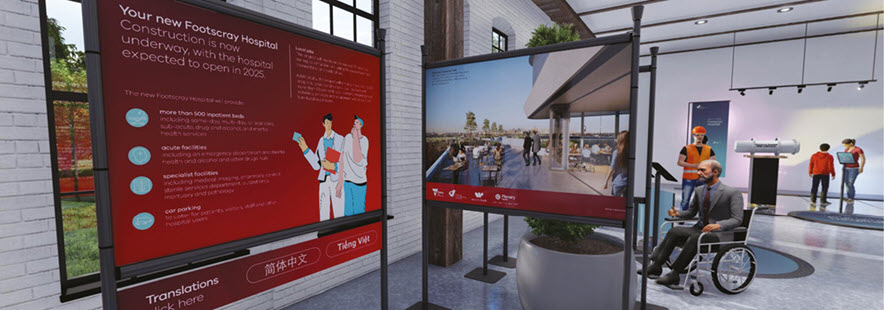
Have you heard about our time capsule?
We also want to hear your ideas on what should be included in a time capsule that will be placed on the site of the new Footscray Hospital. Visit the time capsule area in the room to submit your stories, ideas and photos about the ‘People’s Hospital’ and life in the West – and if you were born in Footscray Hospital, we’d love to see your baby photos!
You can also check out the ideas that have been submitted so far and give them a ‘like’ to show your support.
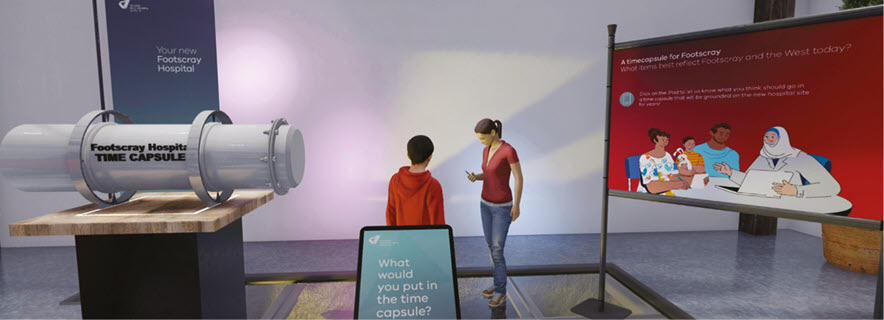
The hospital's legacy - Did you know?
During the 1919 influenza pandemic, 34 years before the existing Footscray Hospital was built, Footscray residents established a makeshift hospital in a local technical school to treat victims of the epidemic, with 574 patients admitted over several months.
After decades of campaigning by locals for better healthcare in Footscray, the Footscray Outpatients and Welfare Centre was opened in 1938.
The current hospital opened in 1953. Originally named the Footscray and District Hospital, it treated more than 5000 patients in its first year. Footscray was the first large acute care general hospital to be established outside Melbourne’s city centre and inner suburbs.
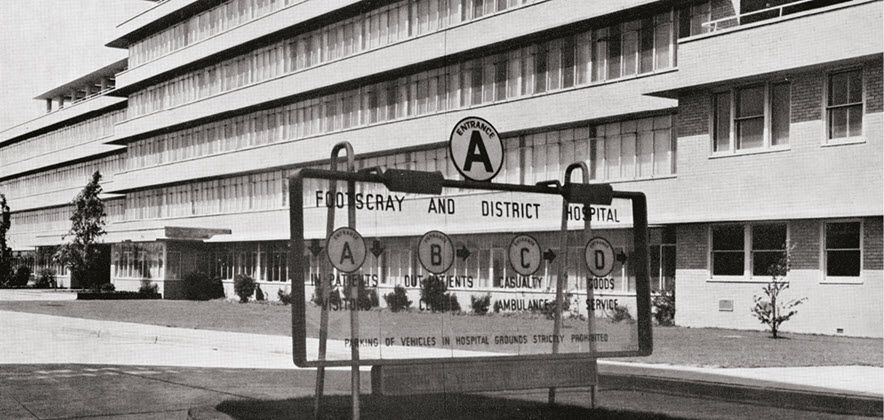
Timeline – onsite works lookahead
-
April Bulk excavation and earthworks expected to be complete end of April. Ongoing authority works on Federal Street.AprilBulk excavation and earthworks expected to be complete end of April. Ongoing authority works on Federal Street.
-
May Last concrete slab on ground pour scheduled to be complete. Installation of first V-Column to IPU Tower on Geelong Road.MayLast concrete slab on ground pour scheduled to be complete. Installation of first V-Column to IPU Tower on Geelong Road.
-
June Superstructure concrete works continued.JuneSuperstructure concrete works continued.
-
July Superstructure concrete works continued.JulySuperstructure concrete works continued.
Welcome to your New Footscray Hospital Project newsletter.
The new Footscray Hospital is taking shape as we enter the second year of construction.
Construction has begun to rise above the site hoarding, where passers-by can now see the building structures and the first lift cores visible from the street.
Bulk earthworks and excavation will be complete at the end of April and eight concrete slabs have been poured, including the first suspended slab for the 12-storey hospital.
An impressive 36,000 tonnes of concrete have been poured on the site to date. Once the new hospital is complete, approximately 62,500 cubic metres will have been poured, which could fill about 25 Olympic swimming pools!
We hope you enjoy reading about progress on site and what’s ahead for the project.
You can subscribe to our mailing list to keep up to date on our announcements and project updates.




